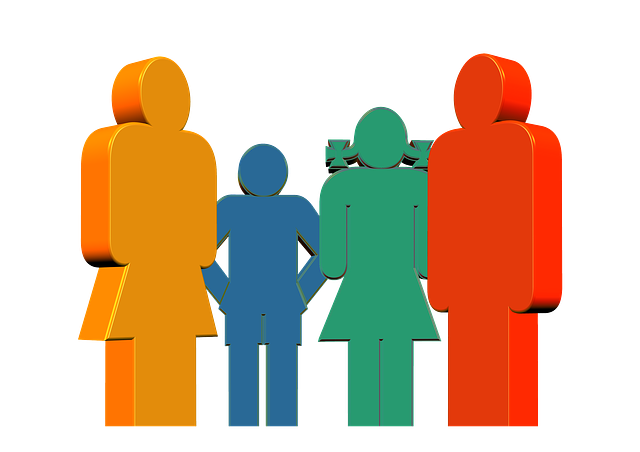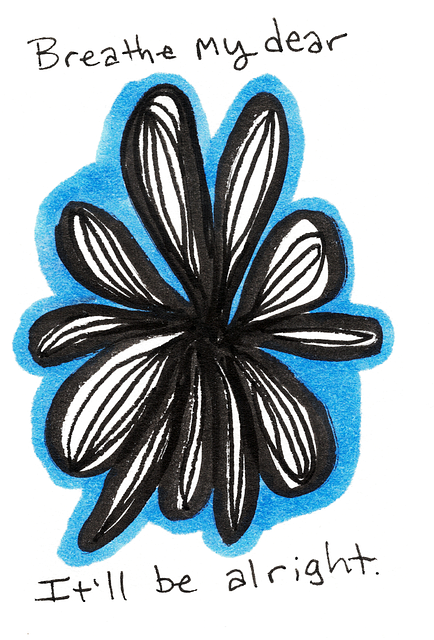Art and music psychotherapy offers a unique, non-verbal approach to mental health by using creative expression as therapy. This method includes art, painting, drawing, sculpture, photography, and music to help individuals explore and express emotions, thoughts, and experiences that may be difficult to verbalize. The process encourages self-discovery, enhances coping mechanisms, promotes emotional well-being, and provides a safe space for healing and personal growth. Research demonstrates its effectiveness in reducing anxiety, depression, PTSD symptoms, while improving mood and emotional regulation, making it a valuable addition to conventional mental health treatments.
“Unleash the transformative power of art and music in the realm of mental health care with our comprehensive guide. Discover how art and music psychotherapy offers a unique, creative approach to healing minds. Explore its potential as a powerful tool for self-discovery, expression, and recovery. From understanding its foundational principles to delving into various artistic interventions, we uncover the benefits and effectiveness backed by research. Learn why integrating these therapeutic practices is vital in modern mental health care.”
Understanding Art and Music Psychotherapy: A Unique Approach to Mental Health

Art and music psychotherapy is a unique approach to mental health that leverages creative expression as a therapeutic tool. Unlike traditional talk therapy, this method recognizes the power of non-verbal communication through art and sound to help individuals explore and express their emotions, thoughts, and experiences. The process encourages self-discovery, enhances coping mechanisms, and fosters emotional well-being.
By engaging in activities like painting, drawing, sculpting, or music making, clients can externalize their internal struggles, gain new perspectives, and develop a deeper understanding of themselves. This form of psychotherapy is particularly beneficial for those who find it challenging to articulate their feelings verbally. It offers a safe, non-judgmental space where self-expression becomes a bridge to healing and personal growth.
The Power of Creative Expression in Therapeutic Settings

Creative expression through art and music holds immense power in therapeutic settings, offering a unique and non-verbal means of communication for individuals seeking to improve their mental health. This approach allows clients to explore and convey emotions, thoughts, and experiences that may be difficult to articulate verbally. The process of creating art or music can serve as a form of catharsis, helping to release pent-up feelings and promote emotional healing.
In psychotherapy, art and music can facilitate self-discovery, enhance self-awareness, and provide an outlet for processing complex emotions. This form of expressive therapy is inclusive and adaptable, catering to diverse personalities and preferences. It empowers individuals to take control of their therapeutic journey, fostering a sense of ownership and engagement in their mental health care. By tapping into their creativity, clients can gain valuable insights, develop coping mechanisms, and build resilience.
Art as a Tool for Self-Discovery and Healing

Art serves as a powerful tool within the realm of mental health psychotherapy, offering individuals a unique and expressive avenue for self-discovery and healing. Through various artistic mediums, clients can explore their emotions, thoughts, and experiences in ways that conventional dialogue might not achieve. This process allows for a deeper understanding of oneself, as creating art often involves a form of introspection that encourages personal growth and self-awareness.
Engaging in art making provides an outlet for expression, enabling individuals to externalize their internal worlds. Whether it’s painting, drawing, sculpting, or collage, the act of creating can help clients make sense of complex feelings and memories, ultimately contributing to improved mental well-being. By embracing art as therapy, professionals in the field of psychotherapy can facilitate a transformative journey, empowering individuals to reclaim their mental health and discover new paths toward healing.
Exploring Different Forms of Art Therapy Interventions

Art and music psychotherapy offers a unique and versatile approach to treating various mental health conditions. One of the strengths lies in its ability to explore diverse art forms as therapeutic interventions, catering to different client preferences and needs. For instance, painting, drawing, sculpture, and photography provide visual artists with avenues to express themselves while engaging in therapy. These creative processes can help individuals process emotions, memories, and traumatic experiences, fostering a deeper understanding of their psychological states.
Music, another powerful medium, is equally effective in mental health psychotherapy. Creating or listening to music allows clients to communicate beyond words, tapping into their subconscious thoughts and feelings. This non-verbal form of expression can be incredibly liberating, especially for those who find it challenging to verbalize their emotions. Art and music therapies provide a safe space where individuals can explore and challenge themselves, ultimately contributing to improved mental well-being and enhanced coping mechanisms.
Benefits and Effectiveness: Research Insights into Art and Music Psychotherapy

Art and music psychotherapy offers a unique approach to enhancing mental health and well-being. Research has shown that engaging in creative processes through art and music can have numerous benefits for individuals dealing with various psychological challenges. Studies indicate that this form of psychotherapy can reduce symptoms of anxiety, depression, and post-traumatic stress disorder (PTSD), while also improving overall mood and emotional regulation.
The effectiveness of art and music therapy is supported by empirical evidence. For instance, a study published in the Journal of Clinical Psychology found that music therapy sessions significantly lowered levels of stress and improved emotional expression in patients with mental health disorders. Similarly, research into art therapy has demonstrated its positive impact on self-expression and coping mechanisms, providing individuals with alternative ways to process and manage their emotions. These insights underscore the value of integrating art and music psychotherapy into conventional mental health treatments, offering a holistic approach that caters to diverse therapeutic needs.
Integrating Artistic Practices into Modern Mental Health Care

In today’s digital era, the integration of artistic practices into mental health care has emerged as a powerful therapeutic tool, enhancing traditional psychotherapies like art and music therapy. These creative approaches tap into individuals’ unique expressions, fostering emotional release and improved mental well-being. By incorporating painting, sculpture, dance, or even simple coloring, therapists enable clients to communicate deeply felt emotions when words may seem inadequate.
Art and music psychotherapy offers a safe space for exploration, allowing folks to navigate complex feelings and experiences. This approach has proven particularly beneficial in treating anxiety, depression, trauma, and other mental health conditions. It revolutionizes traditional therapy by engaging the mind, body, and spirit, fostering a holistic healing process that resonates with many individuals seeking effective mental health support.
